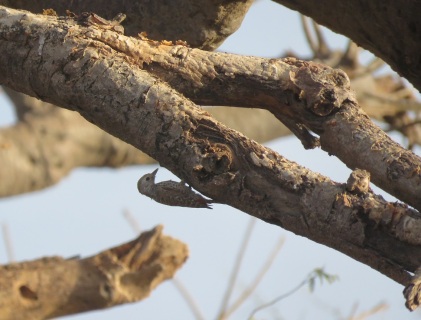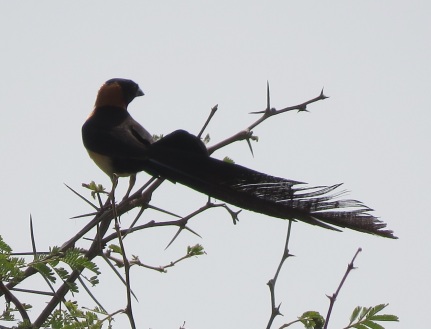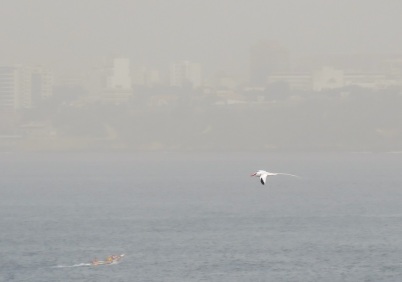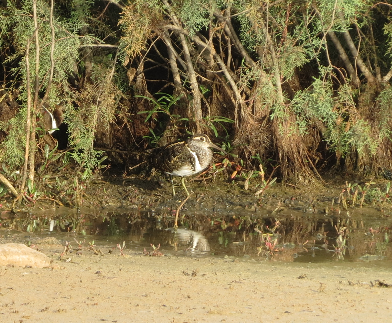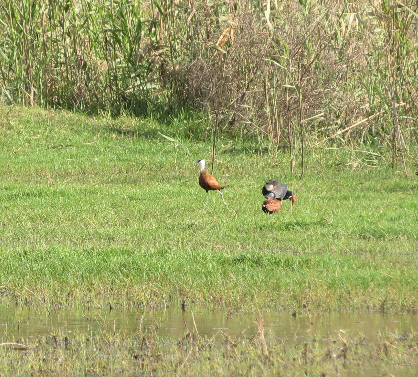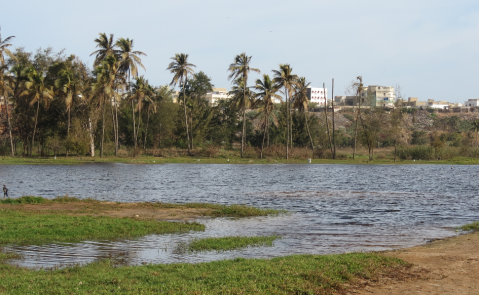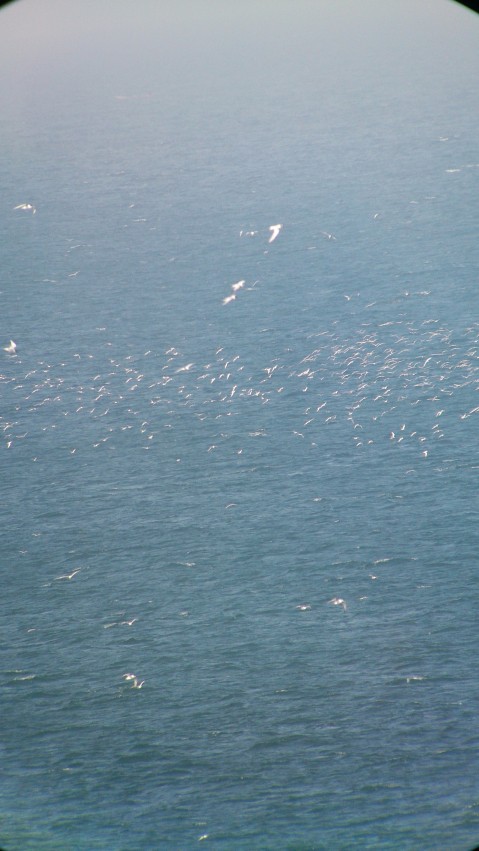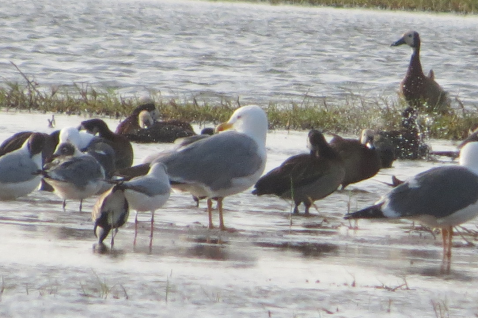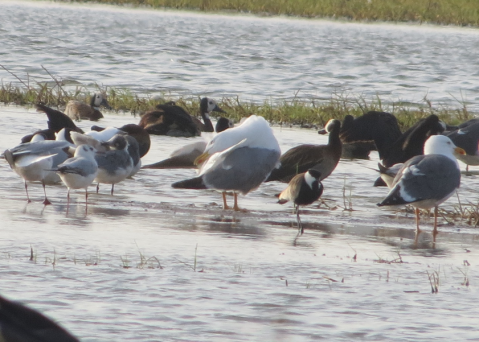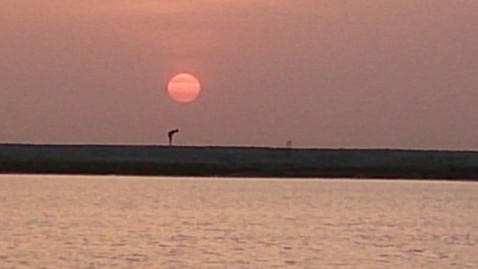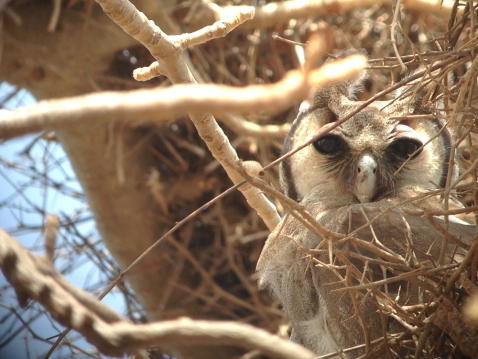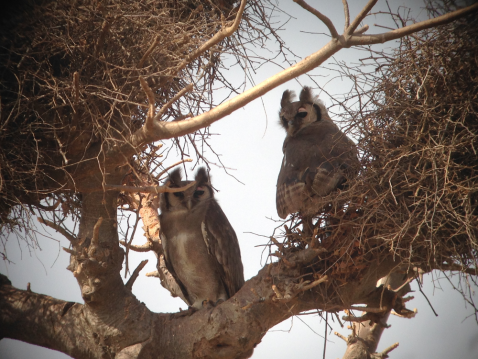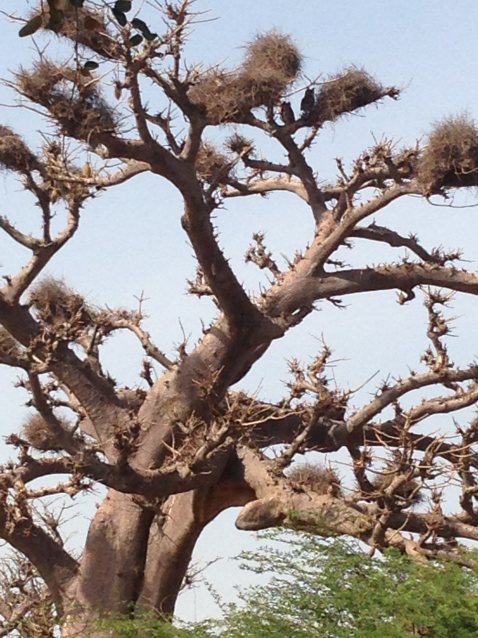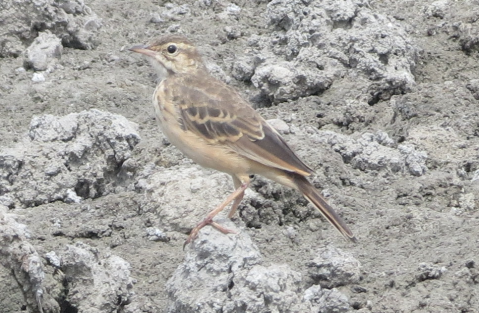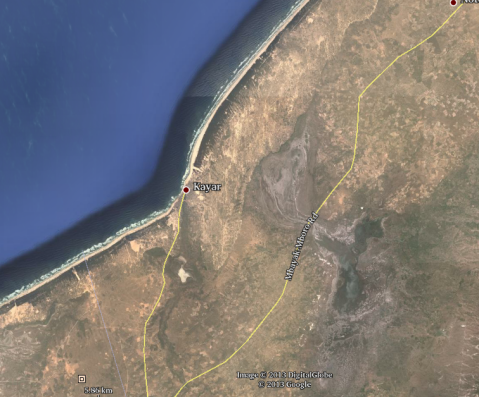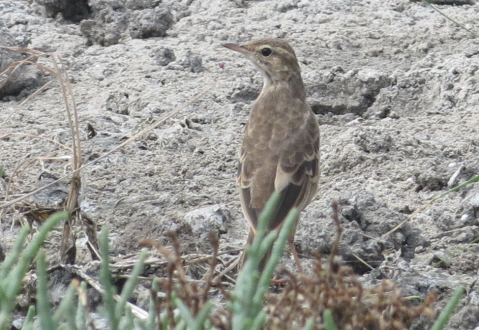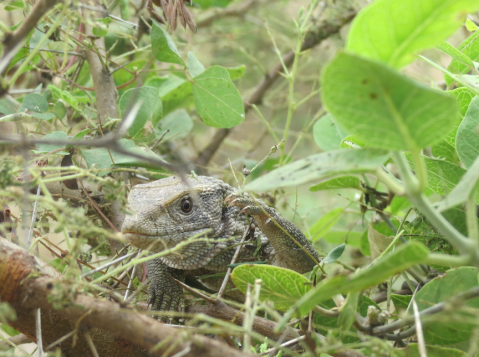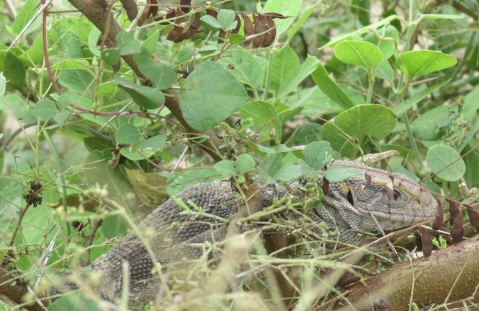Senegal birding and the UK Birdfair 2017
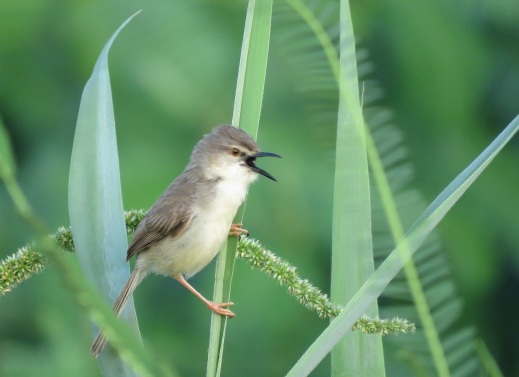
Last summer I had the chance to be in the UK for the Birdfair 2017. This is the largest annual market in Europe for birdwatchers. There is some overlap with bird conservation and many Birdlife partners are there, but this is primarily a place for the buying and selling of everything that birdwatchers desire; books, optics, but especially birdwatching holidays, and this is big business! Bird tour companies from many South American and African countries had flown in staff to advertise their holidays.
At the fair, South African birder Micheal Mills launched The Birder’s Guide to Africa, which aims to tell birders what is most distinctive about each country’s list of birds and where to go in Africa to most easily see each of the continent’s species. Whilst I do not agree with everything in some of the book’s West African chapters, it is a good start for a discussion of bird tourism in Senegal – which for many reasons would deserve a more prominent place on the Africa birding map (one of the many down-sides of taking very much of a quantitative, purely list-based approach to defining birding destinations, as is done by Michael Mills, is that many countries do get the recognition they deserve).
What is unique? Should more birders visit Senegal, and if so what should Senegalese bird guides do to encourage them? It should be said that I am talking about a certain type of birdwatching tourism – visiting places to make lists of unusual birds – which is the profitable market in which the Birdfair sells. From this perspective, the spectacles of Djoudj, the Sine Saloum and Kousmar are still important, but not enough if the birding guide cannot also find the country’s more unique species.
So, how visible was Senegal at the Birdfair? The short answer is almost invisible! Let’s avoid the historical and perhaps linguistic reasons why The Gambia features at the UK Birdfair, and look at all of West and North-West Africa. Geopolitics affects tourism and, correctly or not, many of the region’s countries are seen as more difficult places to organise tours. Unfortunately, these days large parts of Mali, Burkina Faso, Niger, and northern Nigeria and Cameroon are off-limits to foreign visitors due to ongoing conflict and security concerns. Currently the two most advertised North-West/West African destinations for bird tours are Morocco and Ghana, as destinations for European, North American and South African birders, who are the three main groups.
Let’s take the African Bird Club country lists, which taxonomically almost follow the IOC World Bird List, and query the list. Which species regularly occur in Senegal, but not in Morocco or Ghana and also do not occur widely elsewhere in Africa? This query give Senegal at least 28 “special” species, which it would be a good investment for bird guides to be able to find. Please add your comments to this linked list, which is accessible for editing. Several more could – and probably should – be added, and it’s good to keep in mind that the national list stands at about 680 species (we hope to publish an updated list some time soon on this blog).
Most of the species on this list are birds of the Sahel and the drier, northern regions of the Sudan savanna. The USGS’ excellent recent resources on West African land use shows the western section of the Sahel bio-climatic region, which extends to northern Ethiopia.
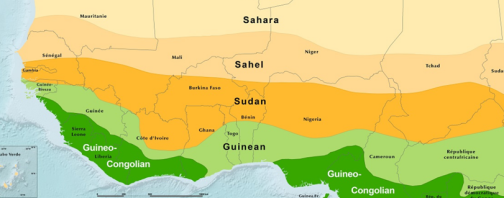
Little Grey (or Sahelian) Woodpecker is a classic example. Its patchy distribution, which does not go further east than western Sudan, includes northern Senegal where most recent West African observations have been made, though WaBDaB, which coordinates bird observations for Burkina Faso, Niger and Chad, has a few records.
For the average bird tour operator, Senegal is the easiest destination and there are places where it is often seen (Les Trois Marigots and near to Richard-Toll), but probably many to be discovered – for instance, it was reported just last week “well south of Louga” by a Swedish group. This and many of the Sahel specials are much more species of the Middle Valley described in Bram’s recent trip, than of the more famous Djoudj/St. Louis area and many are not on the Djoudj list.
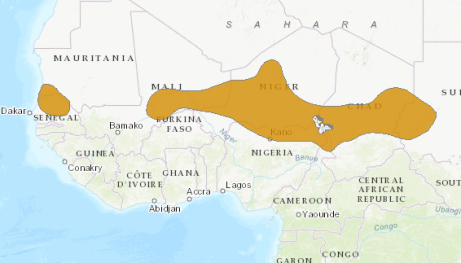
Other species in the 23 with similarly narrow ranges include Cricket Warbler (present in southern Western Sahara, but very localised it seems); River Prinia (header picture – cryptic species only present in the Senegal River delta, River Niger and Lake Chad, though probably overlooked elsewhere); Sennar Penduline Tit; Golden Nightjar (most recent records from Western Sahara where confirmed breeding, and from Chad); Quail-Plover (hard to find, but there are apparently a couple of reliable sites); and the commoner Black Scrub Robin, Sahel Paradise Whydah and African Collared Dove.
A second cluster of specials occur in and near the Dindefelo reserve, Senegal’s most recent addition to the country’s Important Bird Areas list. This is the only place outside Mali where the Mali Firefinch is reasonably reliably seen. Other species with strange and small global ranges including Dindefelo are Adamawa Turtle-Dove and Neumann’s Starling. The Kedougou area, and Dindefello in particular, probably has more surprises in store and is likely to yield additional Guinean species that just creep into Senegal.
Finally, the sea off Dakar makes the list. Away from the Cape Verde, the Cape Verde Shearwater is only reliably seen elsewhere in Africa, in season, off Dakar and the Iles de la Madeleine trio of Red-billed Tropicbird, Bridled Tern and the recent arrival Brown Booby are common enough in other tropical waters, but with few reliable places in Africa. The Tropicbirds are pretty much guaranteed at any time of the year, whilst the boobies and especially the terns and shearwaters are only present in certain seasons.
And the message from this? Any Senegalese bird guide who gets to know when and where to find these species should have a profitable business and most of the species are far from the hotspots of Djoudj and the Sine Saloum! And to potential visitors – come over and explore, with or without a local guide: you won’t be disappointed.
(post by Paul, with contributions from BP)
Technopole and Cap Manuel 16 March
As the water levels in Technopole continue to fall, the golf course is now accessible, though with perhaps too much standing water for golfers (see photo below). The painted snipe (three today, including this male) continue to frequent the tamarisk-bordered pool to the right of the main track, just before the submerged tennis courts. The golf course itself has plenty of Jacanas and purple swamp-hens grazing on the damp grassland, whilst black crakes were also out in the open on the edge of the tennis courts.
The main lake, visible from the fishermen’s hut just after the Sonatel building, continues to have good numbers of white-faced whistling ducks, plus a handful of garganey. The gathering of gulls is still predominantly black-headed gulls in smart summer plumage, today with one second calendar year Mediterranean gull.
After Technopole we briefly visited Cap Maneul, where a path follows the foot of the cliffs north from the Savanna hotel to a car park with old gun emplacements. The mix of soft and volcanic cliffs and scrub looks promising and has previously attracted short-toed eagle, osprey and peregrine. We were not lucky today, but saw huge numbers of Sandwich terns offshore, many resting on the water in the late morning, but with birds spread out towards the Iles de la Madeleine and providing extra interest to the already beautiful view. Large numbers of terns sitting on the water is not something I associate with the species in Europe, but here is a common enough sight with common and black terns far offshore. From dusk observations off Ngor and now these birds, I suspect the Sandwich terns roost on the sea overnight. The photo below, taken with my phone though a telescope, gives a general impression of the distant spectacle.
Paul
Technopole water levels drop and the gulls return
For the first time in six months the water levels are low enough to walk across to the golf course club house and the fisherman’s hut on the main lake, almost without wading. Near the latter, islands are beginning to reappear, as are the gulls that have been in recent months flying straight over the site. Amongst a hundred or so black-headed gulls in breeding plumage, what I guess is one of the original 2012 Franklin’s gulls appeared (second from left). Rarer for Technopole (and a site tick for me) was this fine adult yellow-legged gull in the centre of the picture. West African birds are thought to be of Azores origin, but I am unsure of the sub-specific status of this bird. Any helpers?
Eleswhere on the site a marsh harrier, rare here, was hunting the edges of the northern, deep water lake and two female painted snipe were under their usual tamarisk bush to the right of the golf course path with a few wood sandpiper and ruff, all very approachable.
It was a later afternoon visit around 18h, unsual for me, and white faced whistling ducks seemed to be flying in to roost, with a total of c300, along with three garganey.
Paul
Birds on the move, Palmarin and Dakar
The above photo of a wrestler training on the beach at Palmarin at sunset is a token image to compensate for the fact I forgot to pack my camera on the latest trip to Palmarin. Most of our time was spent on observation of gulls on the mudflats. A group of a hundred or so avocets included one ring-coded bird that appears to be of Danish origin, though I await confirmation. Conservatively tens of thousands of red-billed queleas were streaming south along the coast in flocks big enough that the sound created by their wing beats alerted us as we stared down our telescopes. In the other direction, conservatively hundreds of barn swallows were moving low and north. Although we saw the occasional bird in January in the Senegal River delta this year, barn swallow is primarily a migrant in Senegal. Morel gives dates of August to October and February to May. For Djoudj, Rodwell notes spring migration from 26 January, with most birds moving north in March and April and a daily maximum of 300. On the limited evidence, the Palmarin movement is therefore quite large and early.
Back in Dakar, the prolonged N/NE winds that have been around Beaufort 5/6 for three weeks continue. I have not looked long at the sea, but the numbers of northern gannets has increased off Yoff, with hundreds, mostly second calendar year birds, visible, many fishing, in a single scan.
Paul
And it is now 2014!
Verreaux’s eagle owl (www.gregpoole.co.uk)
It has been a bad lapse to not keep up to date with a wildlife sightings blog for two months. In early December, before my Christmas break, two new sightings (African reed warbler and long-tailed nightjar) brought the Technopole list to 200 species since this blog started two years ago.
I have often visited the picturesque fishing cove of Ouakam in Dakar, but so far ignored the cliffs to the north (right as one looks out to sea). A scramble along their foot in mid-January produced two young peregrines, so with the adult bird still on the Hotel Ngor Diorama, at least three are wintering in north-west Dakar.
My second visit to the sparsely vegetated sandy Sahel within 5-10km east of the bridge at Richard Toll on the main N2, south of the road, again produced cricket warblers, though many more and better views than previously. This is a site for the species discovered by French birders in 2010 and like them we also saw cream-coloured and temminck’s coursers and noted the high densities of northern wheatears. A few yellow wagtails picturesquely followed livestock and other paleacrtic passerines, giving brief and difficult views as they flitted from one interior of a bush to the next, were mostly Sylviidae; many common whitethroats, several orphean warblers and one spectacled warbler. Frequent hoopoes, all of the nominate Palearctic race, a couple of tawny pipits, many sand martins and the occasional barn swallow completed the migrant list. As on the last visit, it took a very close approach to a dense Balanites bush to flush a group of fulvous babblers, so perhaps quite a few are lurking.
On to Palmarin where artist Greg Poole (www.gregpoole.co.uk) found and took these excellent photos ( digiscoping with his iphone through his telescope) of Verreaux’s eagle owls in a baobab with buffalo weaver nests; not a rare species, but always fun to find and something of a birding tourist’s favourite.
In the same area of sparsely wooded savanna he flushed a quail plover, another birders’ target species whose elusive behaviour makes it impossible to say much about its true status in Senegal.
The more open areas of Palmarin had the usual good mix of raptors: montagu’s and marsh harriers, common and lesser kestrels, black-shouldered and swallow-tailed kite, short-toed eagle, peregrine and ospreys. Two button quails were another surprise in the same short grassland habitat.
We stayed at nearby Djiffer, where a barn owl roosted in the campement grounds and pomerine skuas harassed a mix of terns, including a roseate tern, feeding on fishing discards. Roseate terns are much better known off Senegal on both migrations and winter records remain scarce, but it is an easily overlooked species. Amongst the familiar waders and terns on the saline lagoons, now mostly dry and with considerably reduced numbers of birds, a count of c200 little terns was notable.
Paul
Lac Tanma 3 November
Juvenile plain-backed pipit
Sunday morning was spent at Lac Tanma, just east of the fishing town of Kayar, with Bram Piot. A 2.5km width of sand dunes separates the lake from the sea, but numerous shells in the soil indicate that this must once have been been an inlet of the sea, isolated from the Atlantic at some point by the spread of the dunes. The water tastes a bit salty, but there are water lilies on the fringes of the part of the lake south of the Bayakh-Mboro road, which I associate perhaps erroneously with fresh water.
Lac Tanma: east of Kayar either side of the Bayakh-Mboro Road
This is a temporary, rain-fed lake, dry last winter by February. As with other such lakes to the north and south of Dakar that I have recently visited, it is bursting with water after this year’s heavy rains (there were a few drops today) and there is little habitat for waders. Whereas on 12 November 2012 a few hundred each of ruff and little stint were on the lake margins and hundreds of greater flamingos feeding in the centre, today the numbers were respectively less than 10, nil though still with a few hundred greater flamingos, but clustered at the far edge and inactive. A few hundred Palearctic ducks,, a mix of northern shoveler and garganey, had arrived, but the exciting waterfowl find was a female knob-billed goose with six flightless young. It has surely been overlooked, but this seems to be the first documented breeding for Senegal¹.
Otherwise the dominant waterbirds were feeding black terns and less active gull-billed terns. Perhaps 10 ospreys circled or loafed on the banks and there was a reasonable mix of other raptors; 3-4 marsh harriers, 2 peregrines (one taking a black tern in flight), a female/juvenile montagu’s harrier, african hobby and adult short-toed eagle.
Paleartic passerines were also quite varied. The lake is fringed by low scrub, especially tamarisk, and a few small fields with hedges. This habitat was full of subalpine wablers, with smaller numbers of melodious warbler and one or two willow warbler, common whitethroat, northern wheatear, woodchat shrike, tree pipit and turtle dove. A few yellow wagtails and sedge warblers were around the lake edge and a pallid swift flew over.
Of african resident passerines, a male sahel paradise whydah and several northern red bishops were still in full plumage, whilst two male pin-tailed whydahs had moulted.
Almost at the end of the visit, the plain-backed pipit caused some initial confusion, as the immature plumage with white-ish edges to the feathers on the back gave it less of a “plain back” than its name suggests. This is not a rare species and not assumed to be localised in Senegal, but not one seen much here.
Immature plain-backed pipit
Finally, two photos of an African savanna monitor lizard (perhaps less often seen by birders than the Nile monitor lizard well known from Dakar’s Technopole and Djoudj), that took fright up a bush.
¹ Note by Bram (Dec. 2016): B. Tréca and C. Rouchouse report several breeding records from Lac de Guiers, in Malimbus vol. 11 (1990): Note sur la reproduction du Canard casqué (Sakridiornis melanotos) dans le nord du Sénégal.

